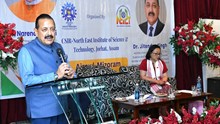
Indian Institute of Technology (IIT) Ropar, through its iHub – AWaDH (Agriculture and Water Technology Development Hub), has launched a Bluetooth Low Energy (BLE) Gateway and Node System under the National Mission on Interdisciplinary Cyber-Physical Systems (NM-ICPS). Funded by the Department of Science and Technology (DST) with an impressive allocation of Rs 110 crore, this innovation highlights India's commitment to leveraging cutting-edge technology for sustainable development.
The BLE Gateway and Node System, a cost-effective solution developed by IIT Ropar, enables seamless data transmission between Bluetooth-enabled sensors and cloud platforms. With its advanced features, the system facilitates real-time environmental monitoring and analytics across sectors like agriculture, logistics, and environmental resilience. Designed for scalable IoT deployments, this device is a milestone in promoting precision, efficiency, and sustainability.
Agriculture stands to benefit immensely from this innovation, as it empowers farmers with tools for precision farming. By monitoring vital parameters like soil moisture, air quality, and temperature, the system enables better resource management and sustainable practices. For instance, real-time data on soil health can inform irrigation schedules, reducing water wastage while enhancing crop yields. Additionally, the BLE technology’s energy efficiency ensures prolonged operation in remote agricultural fields with minimal power requirements.
Beyond agriculture, the system offers transformative potential in logistics. It monitors environmental conditions crucial for preserving perishable goods during storage and transit, significantly reducing spoilage risks. In the context of smart cities and industrial applications, it supports large-scale monitoring for improved operational efficiency and security.
The BLE Gateway system boasts impressive features, including long-range data transmission, robust connectivity through 4G, WiFi, and LAN, and a weatherproof design for durability in extreme conditions. Its scalability enables the management of over 100 connected nodes, while the wireless setup minimizes installation costs. Additionally, advanced functionalities like Firmware Over-The-Air (FOTA) updates and data encryption enhance usability and security.
This state-of-the-art system redefines possibilities for IoT integration, offering users convenience through remote data access and proactive alerts.
















